The harmonica is a great instrument for any musician to pick up. They’re affordable, versatile, and have a huge amount of tuition resources available for free online!
How are harmonicas used?
Often associated with blues and country music, the harmonica has been seen in wide-ranging music genres, even classical!
Harmonica, also known as a harp, is easy to play and versatile in the sounds it can produce. You can play melodies with a large amount of expression, but can also play chords as an accompaniment instrument.
There are various techniques to try out with your breathing or embouchure (mouth shape), such as a tremolo sound or the most famous harp technique, bending.
Better still, harmonicas are great because of how affordable they can be. Sure, some of the most expensive ones will cost you hundreds, and sometimes thousands, of pounds, but you can buy a classic harp like the Hohner Marine Band, which has been used by many professionals all over the world for over a century, for less than £50.
Parts of the harmonica
One of the best things about the harmonica is that they’re often easily maintained thanks to spare parts available from their manufacturers.
Knowing what’s in your harmonica will help you pick out your first instrument as often the different materials or construction of these parts differentiate from one harmonica to another.
First though, a little explanation of the workings of a harmonica!
How do they work?
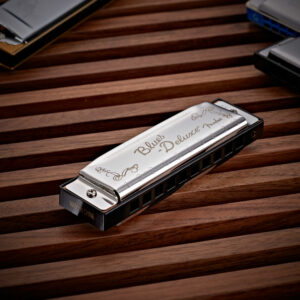 Harmonicas are wind instruments with metal reeds inside that vibrate when you blow or draw air through them.
Harmonicas are wind instruments with metal reeds inside that vibrate when you blow or draw air through them.
There are also holes along the length of the harp, each one directing air over a single reed. The tuning of the reeds can vary but we’ll go into that later.
What are the parts and what are they made of?
We’ve mentioned reeds, and these are usually placed on what’s called a reed plate. There’s typically one reed plate for the blow reeds and another for the draws. Reed plates tend to be made of metal, just like the reeds.
Sandwiched between both reed plates is the comb. This forms the chambers in which air is forced over the reeds.
Traditionally, this is made of wood, but can often be made of ABS plastic. Wood is often enjoyed for its classic feel and tone. However, it can swell with moisture over time and is subject to warping or cracking when in certain climates.
Plastic combs are immune to swelling and are less susceptible to changes in temperature or humidity. One particularly good example is the Fender Blues Deluxe, but many other harps use ABS too.
They can also offer a smoother, more comfortable gliding feel on your lips, although many modern wooden combs are lacquered to make them equally as enjoyable and provide better resistance to swelling.
The mouthpiece is usually integrated into the comb, which the holes you blow through are a part of. Some harmonicas, however, like many chromatic ones, have a separate mouthpiece.
On the outside of the instrument, on both the bottom and top, are the cover plates. Usually, these are metal but sometimes they can be made of other materials like plastic. Our playLITE Harmonicas are made of plastic and are available in several vibrant colours.
The material and shape of a harmonica’s cover can greatly affect its sound. Hohner’s Rocket series features vents on the sides, allowing you to hear your harp over the band. The Hohner Rocket Amp series, on the other hand, removes these vents and projects the sound directly into a microphone, so you can amplify your harmonica.
Different types of harmonicas
Now let’s talk about the different kinds of harmonicas. There are several types but you’ll probably be most familiar with diatonic harmonicas.
Diatonic
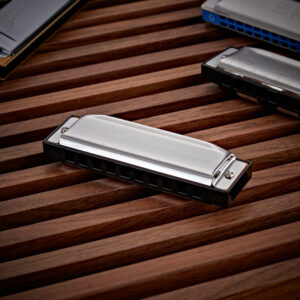 Diatonic harmonicas, also known as blues harps, are called this because they’re tuned in one particular key. Often harp manufacturers will sell a type of harmonica in multiple keys, sometimes all 12 keys.
Diatonic harmonicas, also known as blues harps, are called this because they’re tuned in one particular key. Often harp manufacturers will sell a type of harmonica in multiple keys, sometimes all 12 keys.
The standard tuning system is known as Richter tuning. This is basically a major scale where blowing the holes produces the notes of a tonic major chord (in C it would be C E G) and drawing produces a dominant 7th chord with a 9th (in C this would be G B D F A).
You may think this is pretty limiting; your harmonica can only play in one key. But by using bending, you can get all the notes in between the normal diatonic notes and play any chromatic notes you want.
You can also play in the modes of the harmonica’s key. This is common in many forms of harp playing. If you play from the 2nd draw note you’ll get a mixolydian mode in G (basically a major scale with a minor 7th rather than a major 7th).
This is known as playing in 2nd position, or cross harp playing, and is seen in blues and country music a lot as you can also play a blues scale in this position. Our own Harmonica by Gear4music and the previously mentioned Fender Blues Deluxe are both diatonic harmonicas in Richter tuning.
Less commonly found are harmonicas tuned to minor keys, both natural and harmonic. Lee Oskar Harps are a well-known example of this.
A subset of the standard diatonic harp is the octave harp. As the name implies, they double the number of reeds with two layers of holes, so when you blow or draw, you actually play two notes spaced exactly an octave apart.
A very full and rich sound is produced from this, which is popular in folk music where you want your harp to be heard over the band. The Seydel Club Steel is a good example of this, it also features a more ergonomic curved shape in its construction.
Shop now | Diatonic harmonicas
Shop now | Octave harmonicas
Chromatic
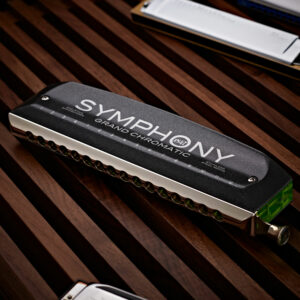 Chromatic harmonicas do just as they say on the tin, they play chromatically. This can be achieved in two main ways.
Chromatic harmonicas do just as they say on the tin, they play chromatically. This can be achieved in two main ways.
The first way is with a slide mechanism, which essentially shifts the reed plates you’re blowing under. So, you push in the slide and, instead of a harmonica in C, you’ll be playing a harmonica in C#.
With that, you can play any note you want without needing to bend. Slide harmonicas are usually in one of two configurations: straight-tuned or cross-tuned. This refers to how the reeds are arranged and, therefore, how the holes are blocked in order to direct air.
Straight-tuned harps have one reed plate for C and another for C#. Cross-tuned harps, on the other hand, alternate between C and C# tuned reeds on each reed plate. You can see which is which by looking in the holes – if the metal slider runs horizontally in one line along the harp then it’s straight-tuned, a more checkerboard-style pattern is cross-tuned.
Our Chromatic Harmonica by Gear4music is a good, affordable way of getting into the chromatic harmonica, and it’s also an example of a cross-tuned instrument. If you’re more of a professional then the Seydel Symphony 64 is ideal.
The second type of chromatic harmonica uses two rows of holes, each leading to its own reed plate in C and C#, like a sliding harp. An example is Seydel NONSLIDER – can see there are two rows which are spaced, so you can play them separately.
Shop now | Chromatic harmonicas
Tremolo
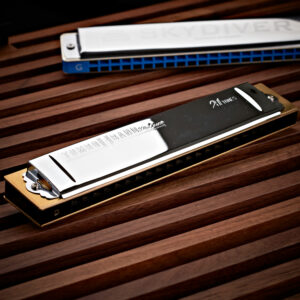 Tremolo harmonicas are distinguishable from other harmonicas because of their two reeds per hole that are slightly detuned from one another. This difference in tuning produces a wavering, beating sound that gives the tremolo harp its distinct tone.
Tremolo harmonicas are distinguishable from other harmonicas because of their two reeds per hole that are slightly detuned from one another. This difference in tuning produces a wavering, beating sound that gives the tremolo harp its distinct tone.
The level of “tremolo” can be altered depending on the difference between the two reeds’ tuning, producing different timbres.
These harps are common across all genres, especially folk music. They’re usually tuned in a similar manner to a standard Richter diatonic harmonica. In fact, in Asia, tremolo harps are known as diatonic harmonicas.
Tombo’s Harmonica Band Deluxe 21 is a good example of a tremolo harmonica; it even has a wooden comb for a classic sound.
Sometimes modifications to the tuning are made by manufacturers.
This is the case with Seydel’s Skydiver Tremolo Harmonica. It’s tuned much like the Tombo harp, except there are two extra holes below the normal hole, providing more range and versatility with the music you play.
Shop now | Tremolo harmonicas
Some unique harps
There are some harps that don’t quite fit into these categories and are notable in their own right.
One of these is the Bass 58. As the name implies, it provides a deep bass sound that’s for orchestral playing. It’s quite a chunky instrument, with two rows of holes on a hinge. This means it can do a full chromatic scale, so you don’t need to own several of these to play a wide range of music.
The Chord 48 is extremely eye-catching and would certainly stand out in your collection. Mainly because it’s huge! This harp can play most of the chords you’ll ever need, such as major, minor, dominant 7ths, and suspended chords. The reed plates are also modular, so you can alter the order of chords to your own needs.
Shop now | Bass harmonicas
Accessories
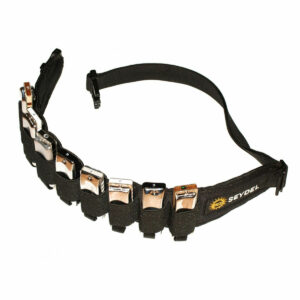 Like all instruments, the harmonica comes with a whole raft of cool accessories you can check out to complement your harp.
Like all instruments, the harmonica comes with a whole raft of cool accessories you can check out to complement your harp.
The most obvious accessory is a case, like the Seydel Soft Case which can hold 14 harmonicas, enough for your whole collection. It’s perfect for gigging or just to keep your harps safe.
Another cool thing you can get is the Seydel Smart Belt. This holds eight harmonicas around your waist, so you can easily swap during performances. Another bonus is that it also makes you feel like you’re in a western film!
If you’re a guitar player or any other instrumentalist, you can get holders that attach around your shoulders, allowing you to play hands-free. The Hohner Harmonica Holder is great for this and can be adjusted to hold many kinds of harmonica.
Finally, you may want to amplify or record your harp at some point. The Shure 520DX Green Bullet is a vintage-style microphone that produces a lo-fi sound that’s perfect for the harmonica. You can get classic blues tones from your harp with this mic.
Shop now | Harmonica accessories
Final thoughts
So hopefully now you have an overview of the harmonica and the different types you can explore. If you’re still wondering what to get, I would recommend going for a diatonic harmonica first as this is the most common one you’ll find online learning resources for.
The other styles are great if you’re serious about playing the harp. And you can always check back here if you want to move on from the diatonic harmonica and need advice on where to go next!

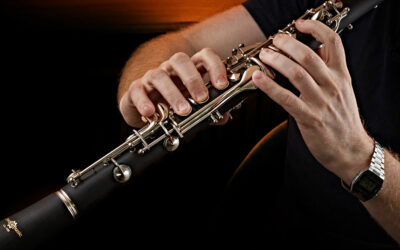

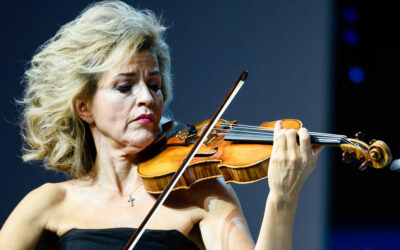

0 Comments